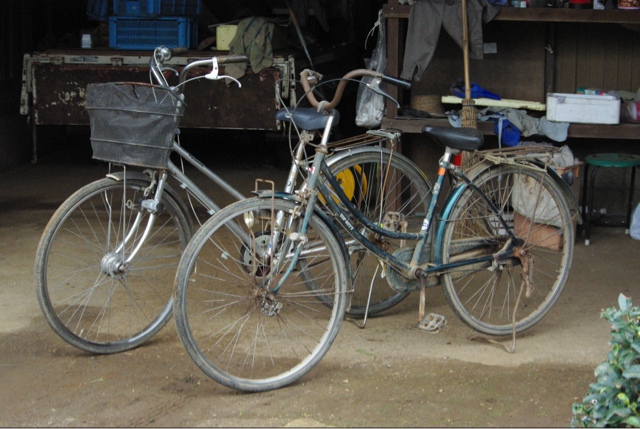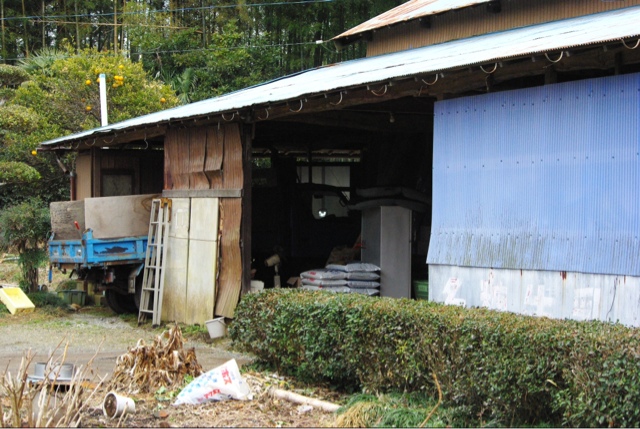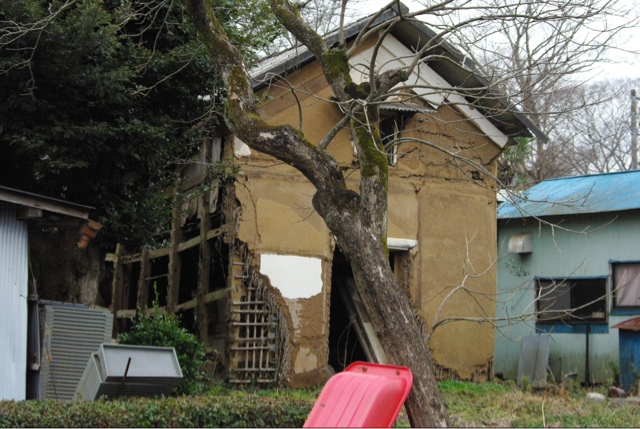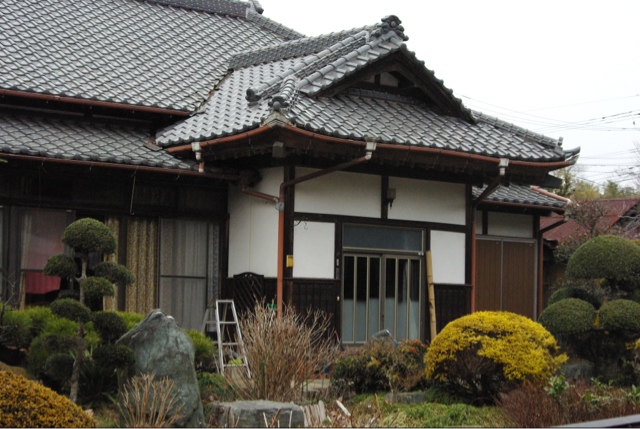Friends in Winnipeg arranged for us to stay in an unused traditional Japanese house originally used by the parents of Akio Okano who with his wife Shigeko have graciously welcomed us onto their homestead. We believe Okano-san worked up quite a sweat getting this place ready for us and then was convinced we would not accept the place. When Japanese people refer to a place such as this, they say "inaka", meaning home, out in the country and probably rustic. Considering the ancient buildings one sees here, rustic is probably true, but isolated it is not. There are neighbours all around us, many a mere stone's throw away. True grocery shopping is a chore which by "jitensha" or bicycle (no horses yet) requires an hour or two. The bicycles have seen better days. Maintenance of anything in Japan is minimal at best, but that requires a blog in itself. Restaurants and other entertainment will be rare, but here we hope to take it easy for a while. We do have a TV with a few channels and the iPad is still quite busy.
More commonly homes are situated near noisy train tracks, but instead we are under the flight path for jets landing at Narita International Airport. But transportation for us is quite difficult. When we arrived Shigeko picked us up at the nearest train station, which is 40 minutes away by car one way. There are a few buses per day, about 20-30 minutes walk from here and people easily get lost in the maze of streets around here. Forget navigation after dark.
This area is a raised elongated area with many tall bamboo (more than 10 meters) and many rice fields at lower levels. The homes tend to be concentrated on higher ground. Apparently this was the coastline of the Pacific Ocean in the Jomon Era, about 3000 or more years ago. We are located in Ibaraki-ken (prefecture) which is not that far from Tokyo. We are located near rivers that empty into nearby Kasumi-gaura (lake) which was a brackish water lake and has been converted to a freshwater lake by means of freshwater rivers being used to flush out the salt and structures such as dikes built by engineers all around the lake.
The rustic building photographed is very interesting in it's construction. It is typical Japanese post and beam, with posts indented on the outside edges to allow thin bamboo laths to rest. Then vertical bamboo laths are lashed to these and some sort of primitive plaster (clay is my guess) with twine embedded has been applied to this. An old wooden spinning wheel can be seen inside.
The photo of the complete front of a house is the one we are staying in, while the other home belongs to our hosts.
The dog is a typical neglected Shiba-ken cross breed, which so many homes around here have chained up in the yard, why I do not know.
The other picture is the metal sheathed machine shed also used to park two mini-trucks used by the Okano's daily.






No comments:
Post a Comment